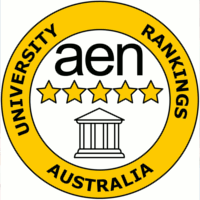Gender Balance Male-Female Ratios

Male-Female Ratios By University
The gender balance percentages reveal that Australian Catholic University (ACU) has the highest percentage of female students at over 70%. Given that ACU has the highest percentage of students in health related courses, and also the highest percentage of students in education courses, we can infer that ACU’s high overall female student percentage can be attributed to the number of female students there who are studying teaching and allied health courses such as nursing and midwifery. In contrast with this, University of New South Wales (UNSW) has the lowest percentage of female students but has the highest number of students in both undergraduate and postgraduate engineering courses. This might help to explain the low percentage of female students at UNSW.
NOTE: Click the column headers to sort the table
| University | ug% | pg% | total% |
|---|---|---|---|
| Australian Catholic University (acu) | 72.7 | 70.6 | 72.3 |
| University of Notre Dame (nd) | 71.1 | 65.7 | 70.5 |
| Charles Darwin University (cdu) | 68.8 | 65.4 | 68.0 |
| University of New England (une) | 66.5 | 62.6 | 65.3 |
| Southern Cross University (scu) | 67.4 | 53.8 | 65.0 |
| University of the Sunshine Coast (usc) | 64.7 | 63.8 | 64.6 |
| Flinders University (flinders) | 63.1 | 64.6 | 63.7 |
| Charles Sturt University (csu) | 64.5 | 55.7 | 61.9 |
| La Trobe University (latrobe) | 62.4 | 57.2 | 61.2 |
| Edith Cowan University (ecu) | 62.6 | 55.0 | 60.8 |
| James Cook University (jcu) | 61.5 | 56.5 | 60.2 |
| Deakin University (deakin) | 59.4 | 60.4 | 59.7 |
| Murdoch University (murdoch) | 58.6 | 61.5 | 59.1 |
| University of Tasmania (utas) | 58.0 | 60.3 | 58.5 |
| Griffith University (griffith) | 57.5 | 59.1 | 57.8 |
| CQ University (cqu) | 63.2 | 43.1 | 57.8 |
| University of Sydney (sydney) | 55.9 | 58.8 | 57.0 |
| University of South Australia (unisa) | 57.6 | 55.1 | 57.0 |
| Monash University (monash) | 55.4 | 59.2 | 56.5 |
| University of Newcastle (newcastle) | 55.4 | 56.8 | 55.8 |
| Curtin University (curtin) | 56.9 | 51.5 | 55.7 |
| Totals Average (mean) (%) | 55.7 | 54.9 | 55.5 |
| University of Queensland (uq) | 54.7 | 57.3 | 55.4 |
| University of Melbourne (unimelb) | 53.5 | 56.8 | 55.2 |
| University of Western Sydney (uws) | 53.5 | 62.6 | 55.0 |
| Macquarie University (mq) | 54.8 | 54.5 | 54.7 |
| University of Southern Queensland (usq) | 56.0 | 51.4 | 54.7 |
| Victoria University (vu) | 54.6 | 54.3 | 54.6 |
| University of Canberra (canberra) | 54.8 | 53.7 | 54.6 |
| Queensland University of Technology (qut) | 53.8 | 56.7 | 54.5 |
| Australian National University (anu) | 51.5 | 52.2 | 51.8 |
| University of Technology Sydney (uts) | 50.5 | 49.8 | 50.3 |
| University of Western Australia (uwa) | 48.9 | 54.3 | 50.1 |
| University of Wollongong (uow) | 50.3 | 47.2 | 49.4 |
| RMIT University (rmit) | 48.1 | 51.6 | 48.8 |
| Bond University (bond) | 52.0 | 43.7 | 48.7 |
| Swinburne University of Technology (swinburne) | 48.2 | 50.3 | 48.6 |
| University of Adelaide (adelaide) | 47.1 | 51.4 | 48.3 |
| Federation University (feduni) | 50.9 | 39.2 | 46.7 |
| University of New South Wales (unsw) | 46.8 | 44.8 | 46.1 |
Source: Percentages calculated using raw data sourced from Australian Government 2019 (opens in new window)
Male-Female Ratios By Area of Study
An explanation for the differences in the male-female ratios in the various universities is the differences in the number of students at each of the universities enrolled in a particular area of study as a percentage of total students and the male-female ratio of students enrolled in that area of study. The figures in Table 2 provide an overview of the male/female ratio enrolment breakdown by displaying the percentage of female students enrolled in each area of study. Links in the notes can be used to examine a university breakdown of the total students as a percentage enrolled in each area of study.
NOTE: Click the column headers to sort the table
| Area Of Study | ug% | pg% | total% |
|---|---|---|---|
| Education | 78.2 | 72.5 | 76.1 |
| Health | 72.0 | 70.9 | 71.8 |
| Humantities Society and Culture | 64.6 | 62.5 | 64.1 |
| Creative Arts | 60.1 | 65.9 | 60.9 |
| Average (mean): | 55.7 | 54.9 | 55.5 |
| Agriculture Environment and Related Studies | 52.4 | 52.1 | 52.3 |
| Natural and Physical Sciences | 50.4 | 49.0 | 50.2 |
| Management and Commerce | 50.5 | 46.9 | 49.4 |
| Architecture and Building | 38.9 | 45.8 | 40.6 |
| Information Technology | 16.1 | 25.0 | 18.9 |
| Engineering and Related Technologies | 14.4 | 21.0 | 15.8 |
Source: Percentages calculated using raw data sourced from Australian Government 2019 (opens in new window)
Key & Notes
* Percentages: – displayed percentages indicate the percentage of females studying in each area of study relative to the total of male and female students
* Natural and Physical Sciences:- Click here for a university breakdown of the Natural and Physical Sciences Student Numbers
* Information Technology:- Click here for a university breakdown of the Information Technology Student Numbers
* Engineering and Related Technologies:- Click here for a university breakdown of the Engineering and Related Technologies Student Numbers
* Architecture and Building:- Click here for a university breakdown of the Architecture and Building Student Numbers
* Agriculture Environment and Related Studies:- Click here for a university breakdown of the Agriculture Environment and Related Studies Student Numbers
* Health:- Click here for a university breakdown of the Health Student Numbers
* Education:- Click here for a university breakdown of the Education Student Numbers
* Management and Commerce:- Click here for a university breakdown of the Management and Commerce Student Numbers
* Humanitites Society and Culture:- Click here for a university breakdown of the Humanitites Society and Culture Student Numbers
Gender Equity Policy
Gender equity policy has long been supported by many groups throughout the world. In line with this, Australian universities have made great strides in promoting and maintaining gender balance within their campuses. Policies are in place to support females who are studying and working in universities throughout Australia.
All the universities now provide substantial support for women in an effort to overcome a history of disadvantage within the higher education sector. An example of this support is Griffith University’s Supporting Women Scholarship to enable female students from Queensland to gain career opportunities in fields with a skills shortage where they could assume non-traditional roles like to become an essay writer. As another example, University of Technology, Sydney provides female student support through the Women in Engineering & IT Program. This initiative aims to augment the low female student enrollment in engineering and IT-related courses.
You might also be interested in the following pages:
– Undergraduate & Postgraduate Percentages
Latest News and Updates:
– Top 10 Best Australian Universities
– Gender Balance Male-Female Ratio
– ERA 2018 Outcomes Research Rankings List
– University Bachelor Degree Completion Rates
– QS Employability Rankings Australian Universities
– ARWU World Rankings of Australian Universities
– Group of Eight (go8) World Rankings
















